We left Zubiri this morning in the last of the morning fog via the Puente de la Rabia or the Rabies Bridge. Legend has it that hearding animals around the main pillar three times would cure them of rabies. This came from the belief that a local saint, Santa Quiteria, was buried beneath the bridge.
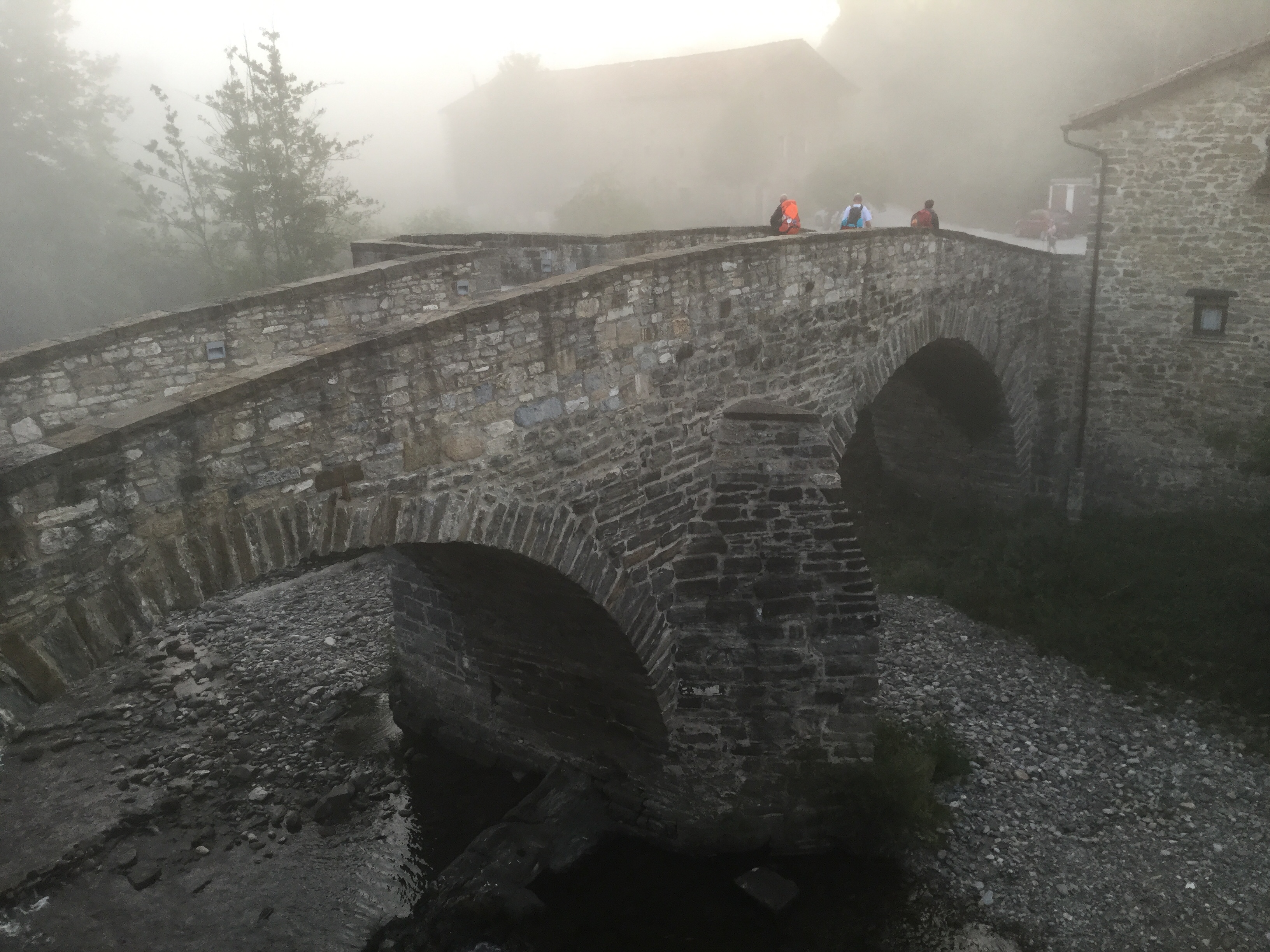
A unique foot bridge that David couldn’t resist crossing even though he really didn’t have to.
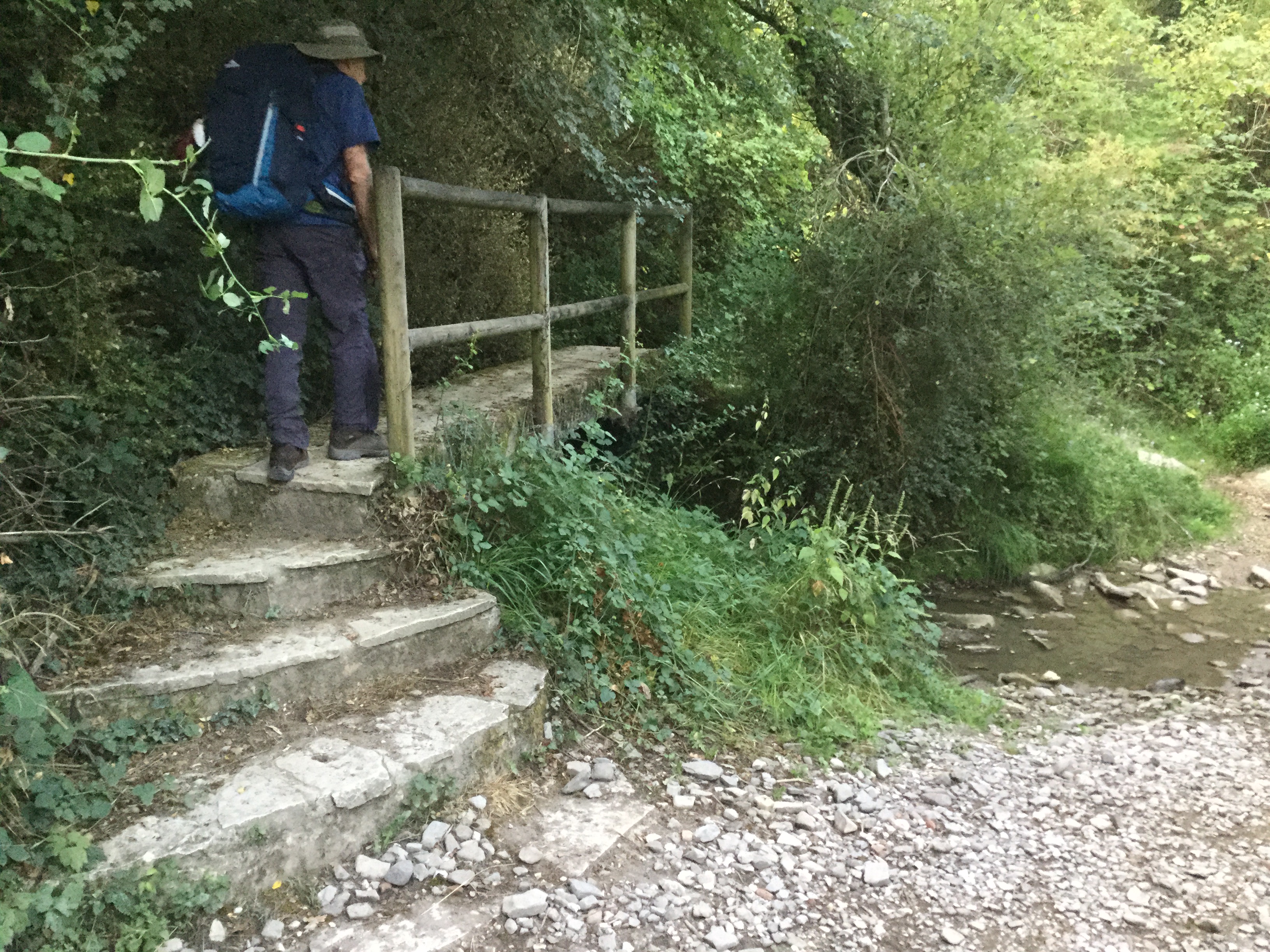
At Zuriarn we crossed the Rio Arga and followed the Rio in the same direction but at a distance to once again cross the Rio Arga outside of Pamplona.
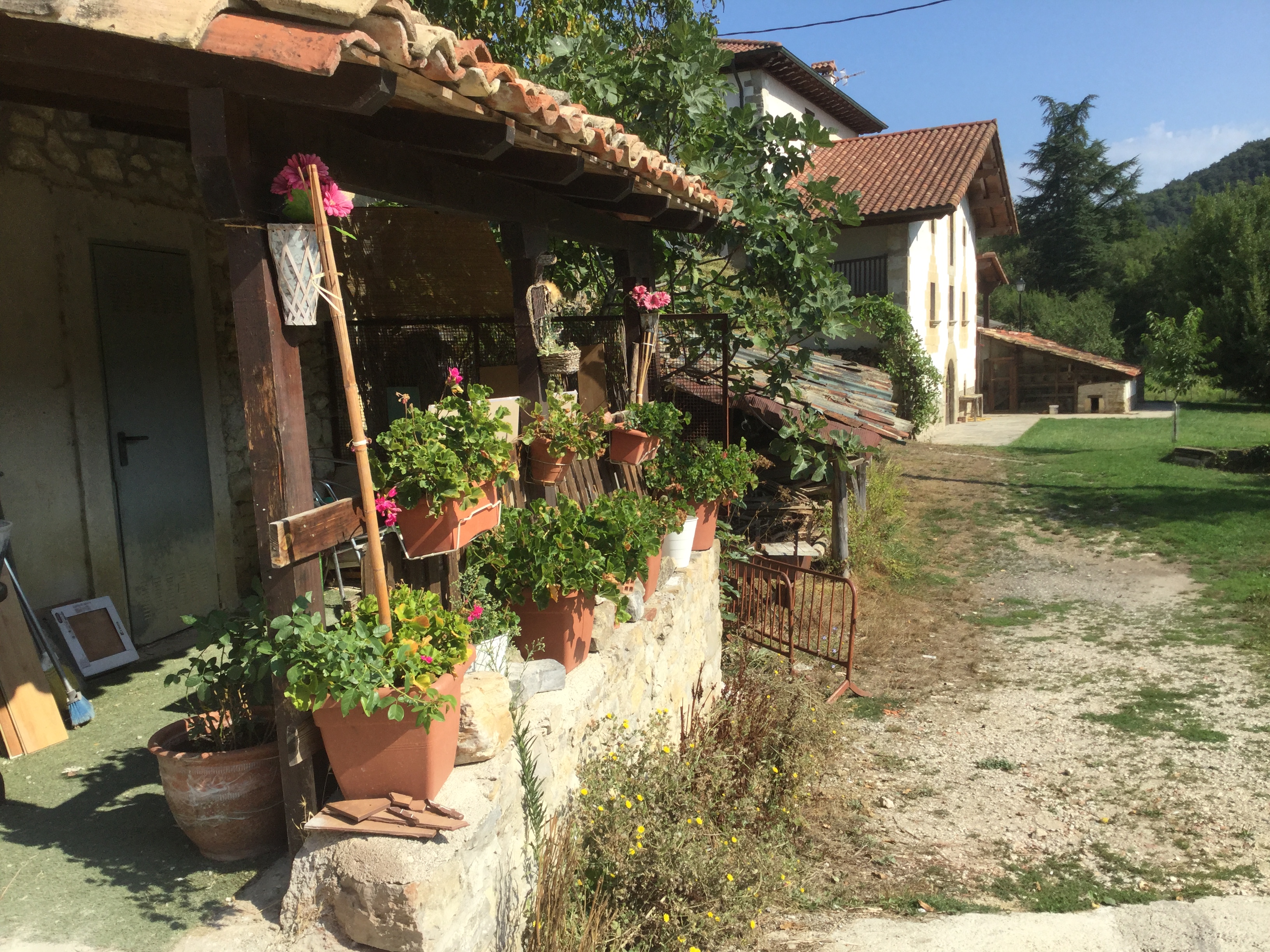
Just as not all bridges are the same not all fountains are alike but unless they state that they are not potable they usually have cool fresh water. This fountain ran into a trough, though I can only guess at what the water trough could have been used for.

We went casual today. Peregrino Dave felt like the real deal when he found a staff on the side of the road. By lunchtime we had changed into our teva’s (with socks) as Peregrino Dave had found a small toe on one of his blisters. We had a discussion about what the collective noun was for more than one blister. Some of the suggestions were a forum, a family and I suggested a pain of blisters.
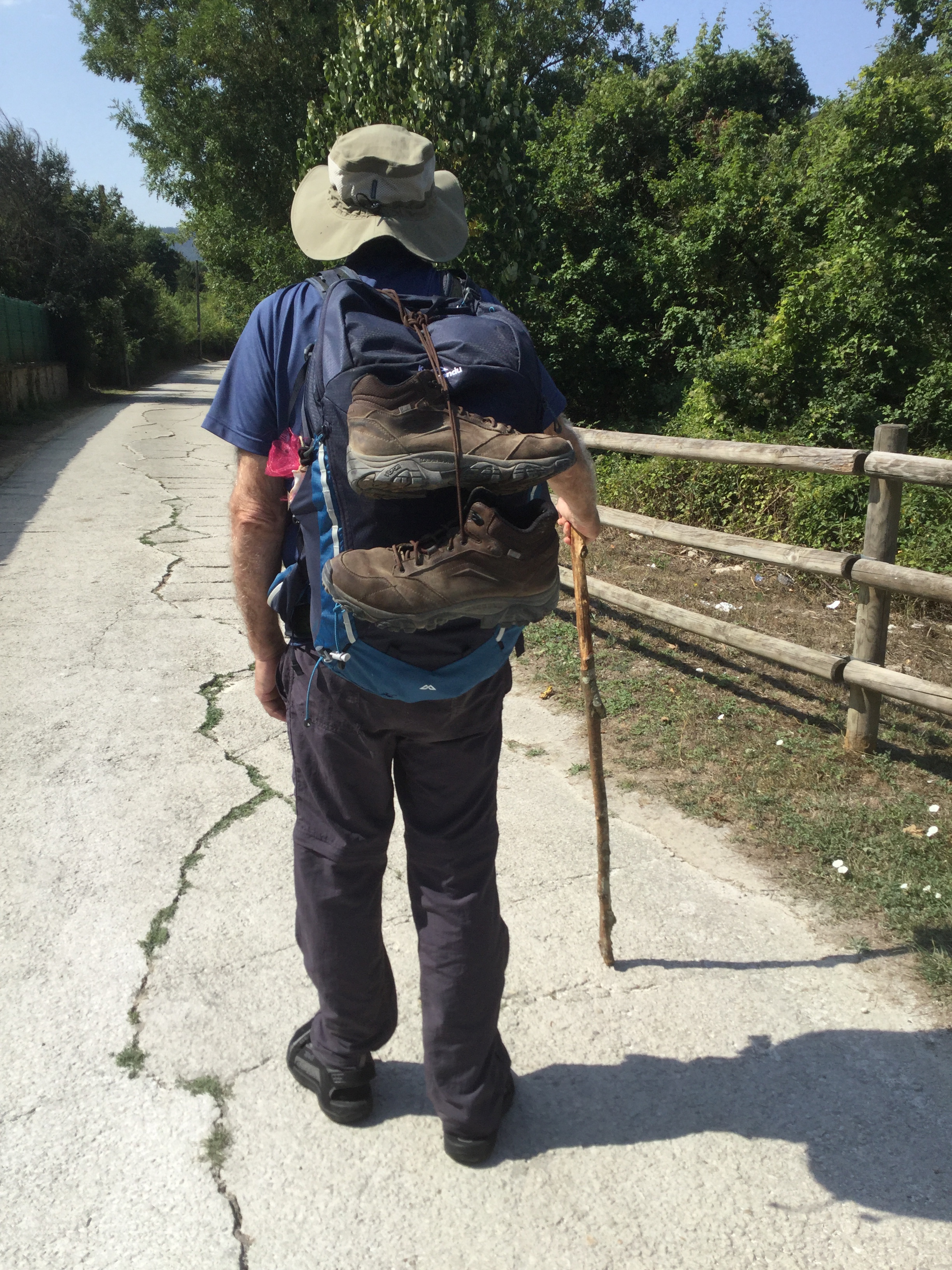
A long purpose built set of steps that brought us up out of the valley. The steps didn’t make the climb any easier but then I didn’t experience the trail before the steps were constructed. Maybe if I had I would have been grateful for the steps.
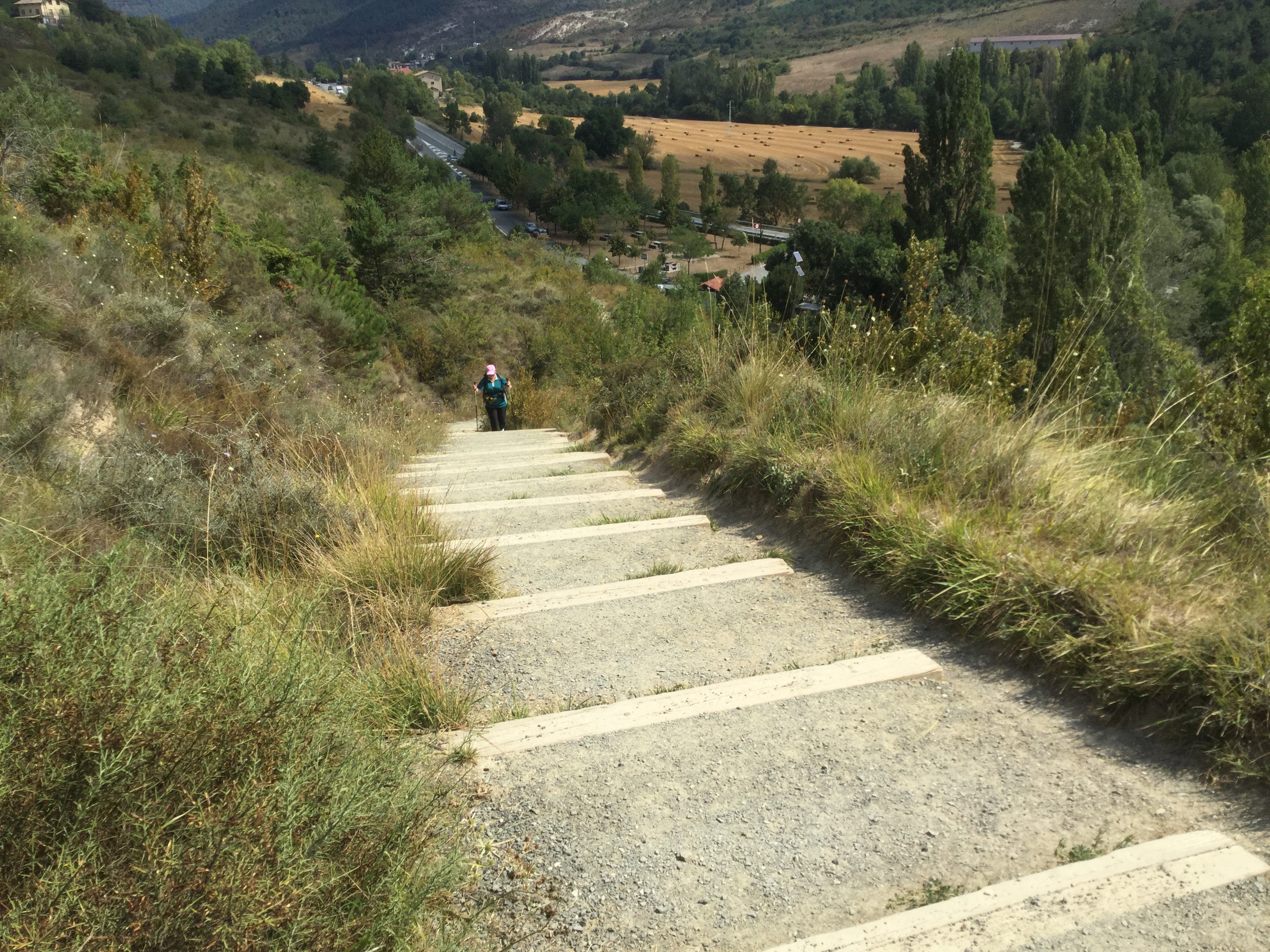
So much is so beautiful along the Way.
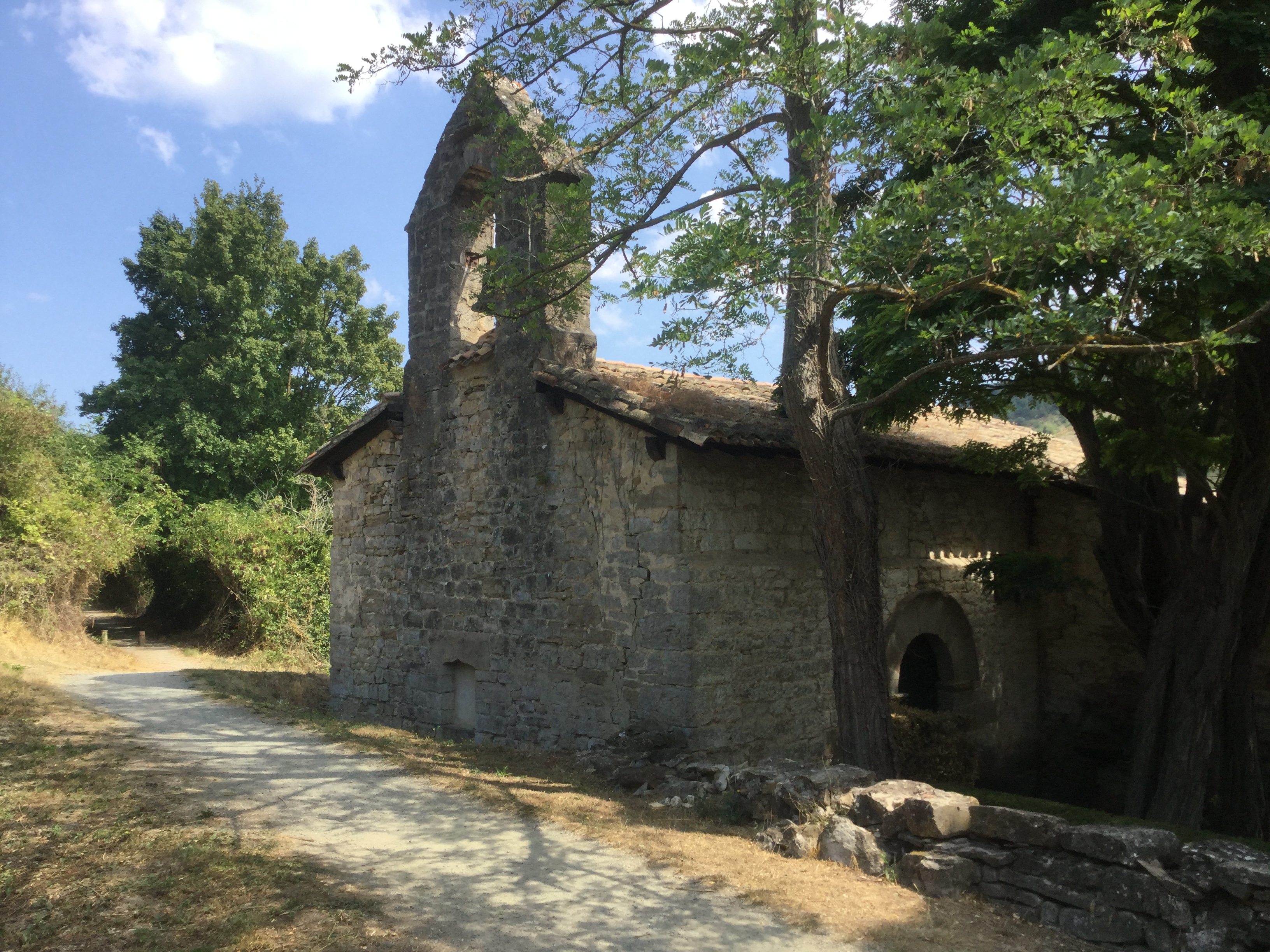
By the time we finally reached Pamplona Peregrino Dave had realised why his staff had been left by the side of the road and he in turn left it for someone else. I also had a thought that at this rate the staff may very well make it to Santiago de Compostella. With the temperature hitting 30+ degrees Peregrino Dave had also ditched the bottom legs of his pants.
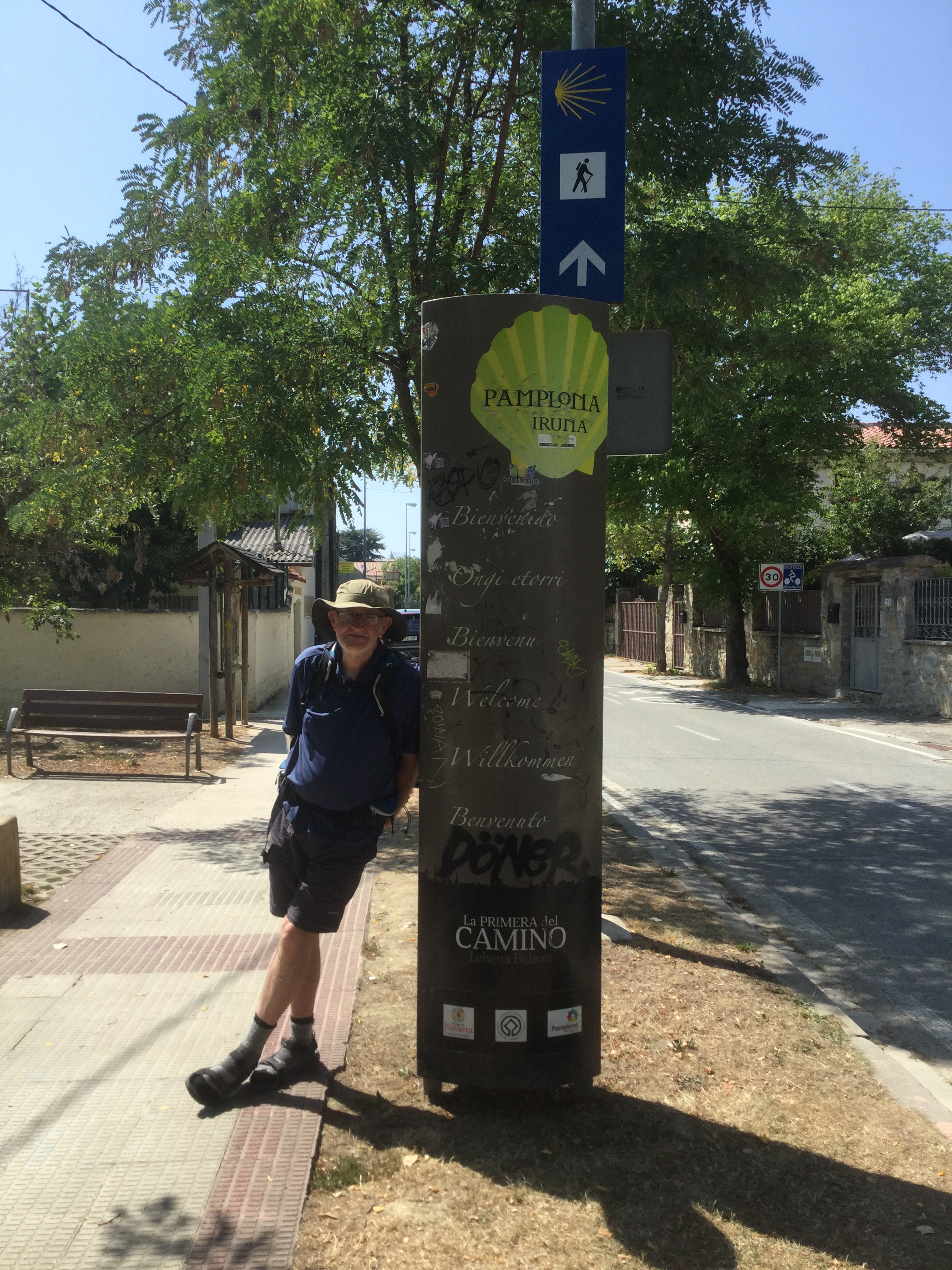
We arrived to Pamplona’s old city through parkland and to the imposing old Wall of Pamplona. We then followed the path around the corner to the left ,
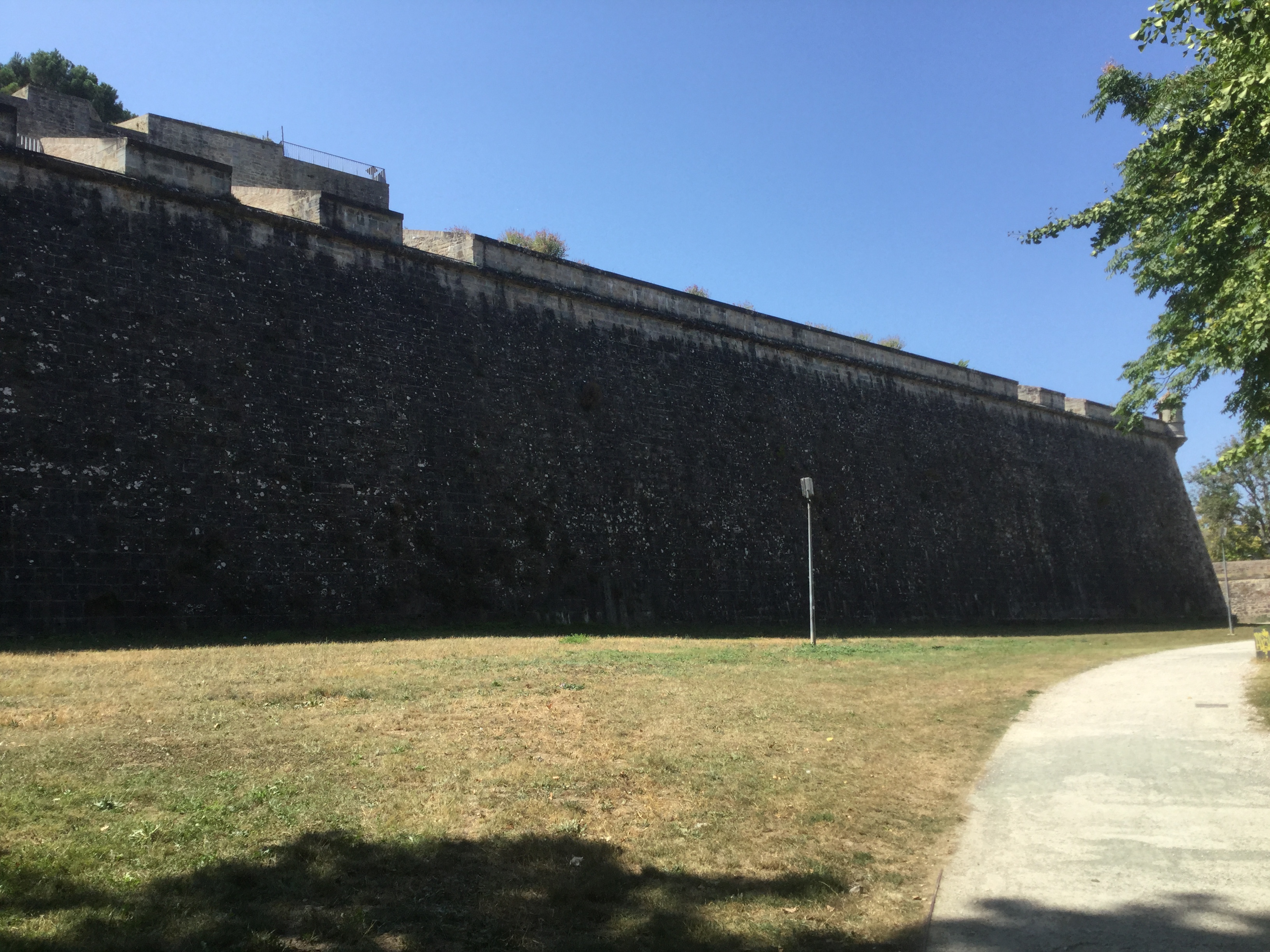
to an entrance complete with drawbridge.
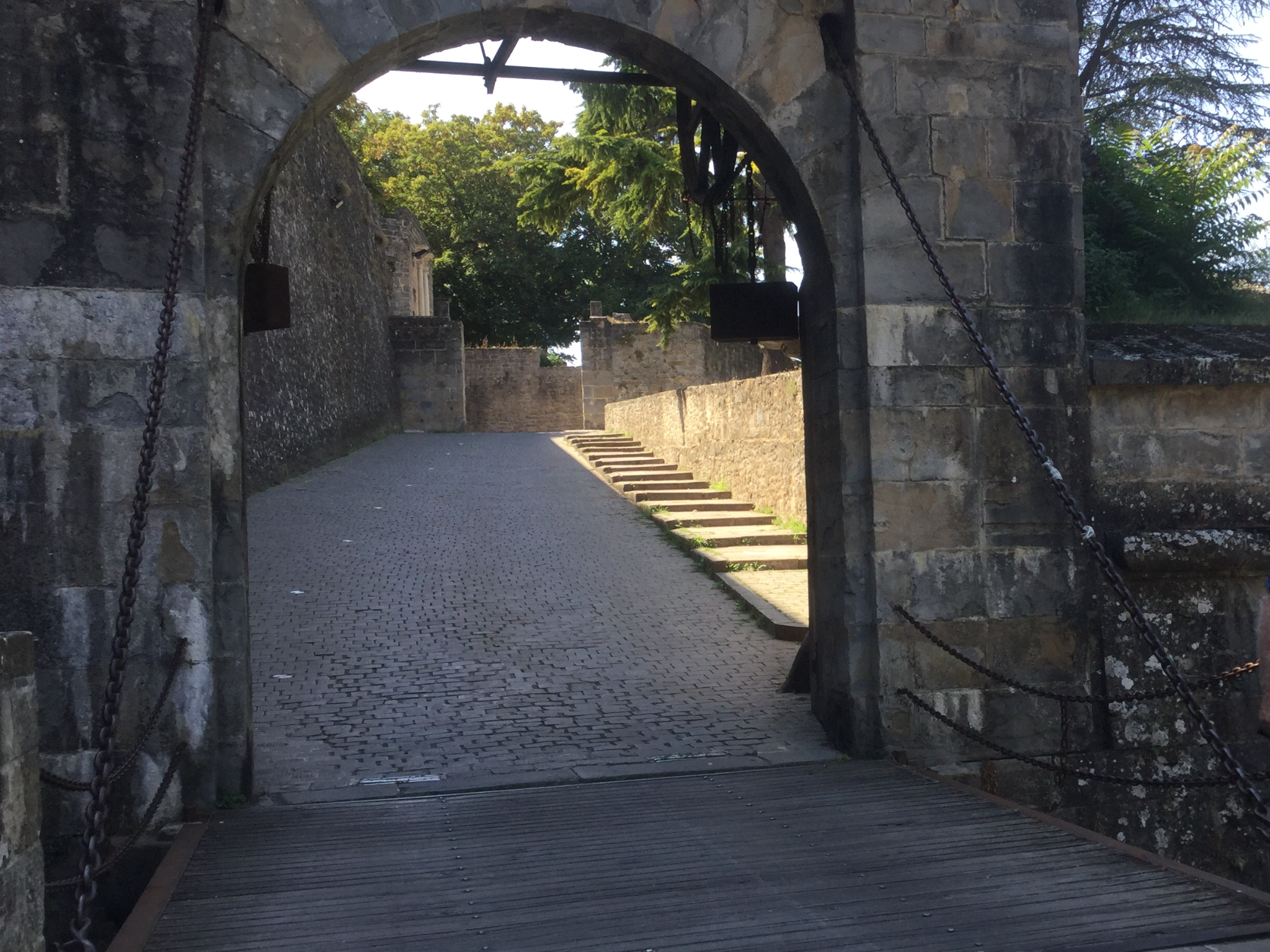
Pamplona has an incredible history. It began as a Roman city Pompaelo which was built on the site of the Basque village of Iruna in 74BC. From the 4th to the 8th century it was ruled by the Visigoths – Germanic people who displaced the Romans-. It was then under Muslim rule for around 50 years until Charlemagne lay siege to the city and placed it under the control of his allies.
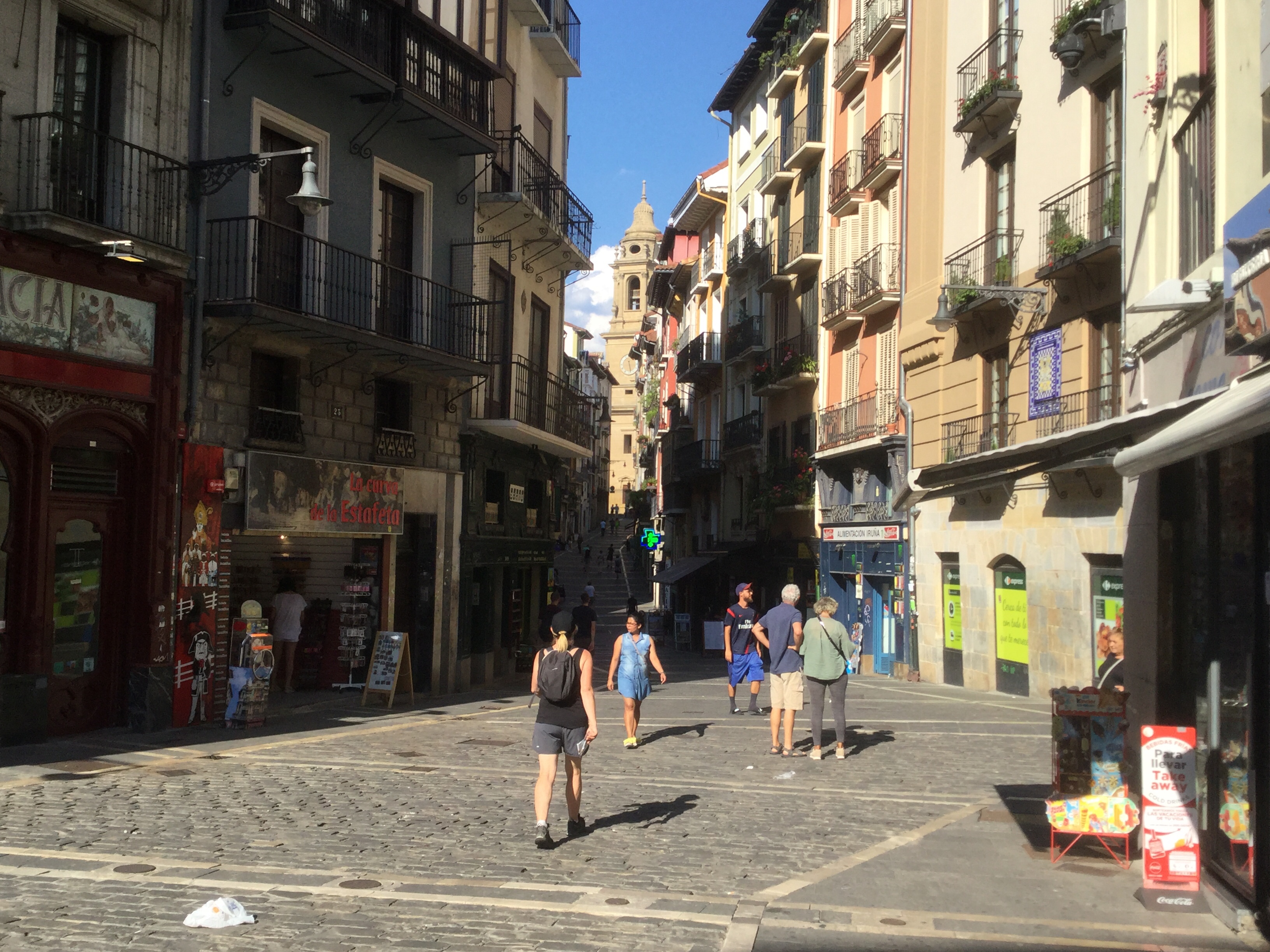
The old city is beautiful and worth more than the afternoon that we had to explore it.
Leave a Reply